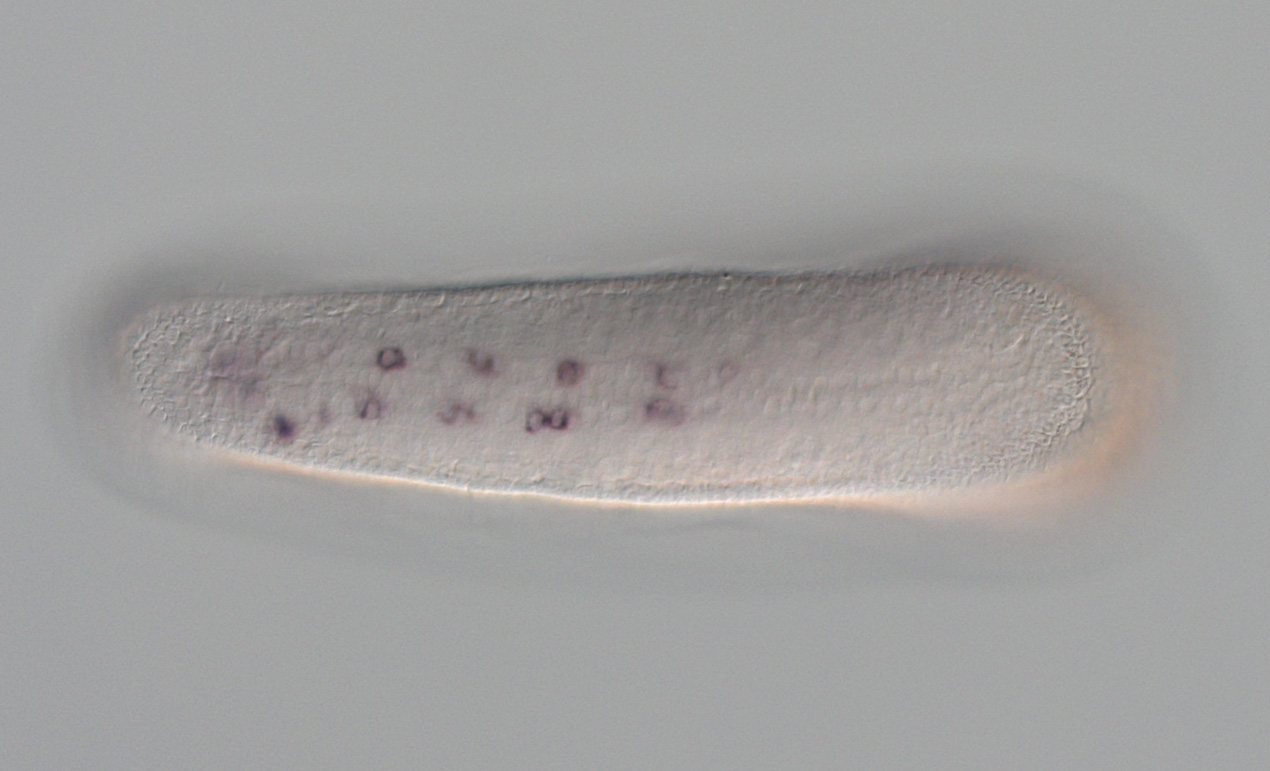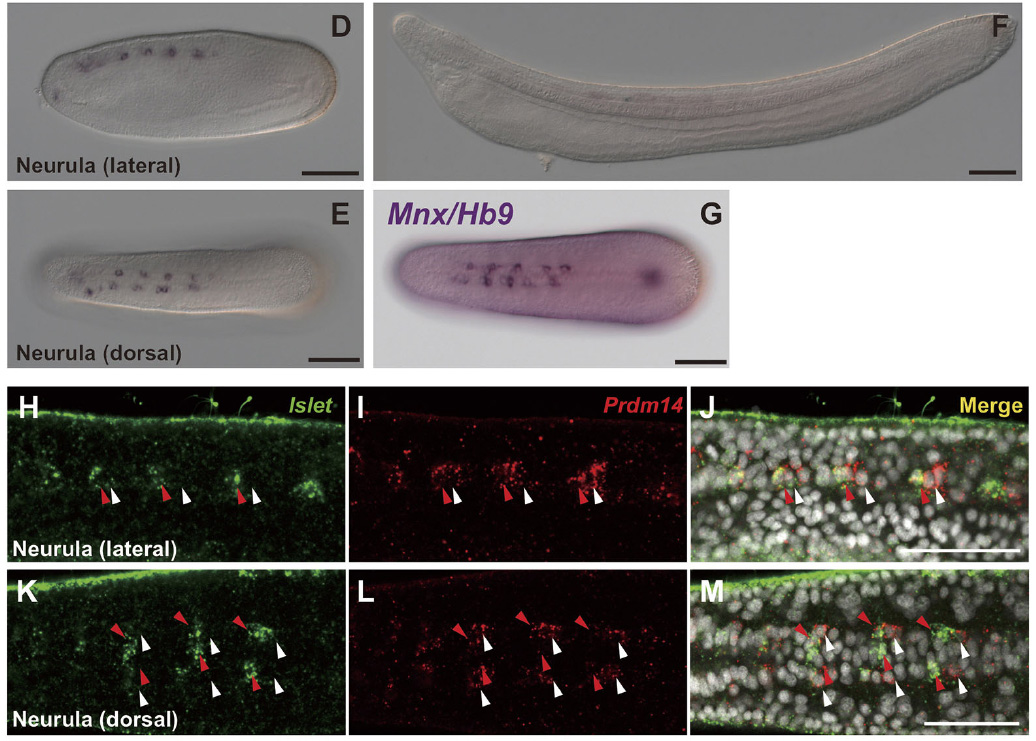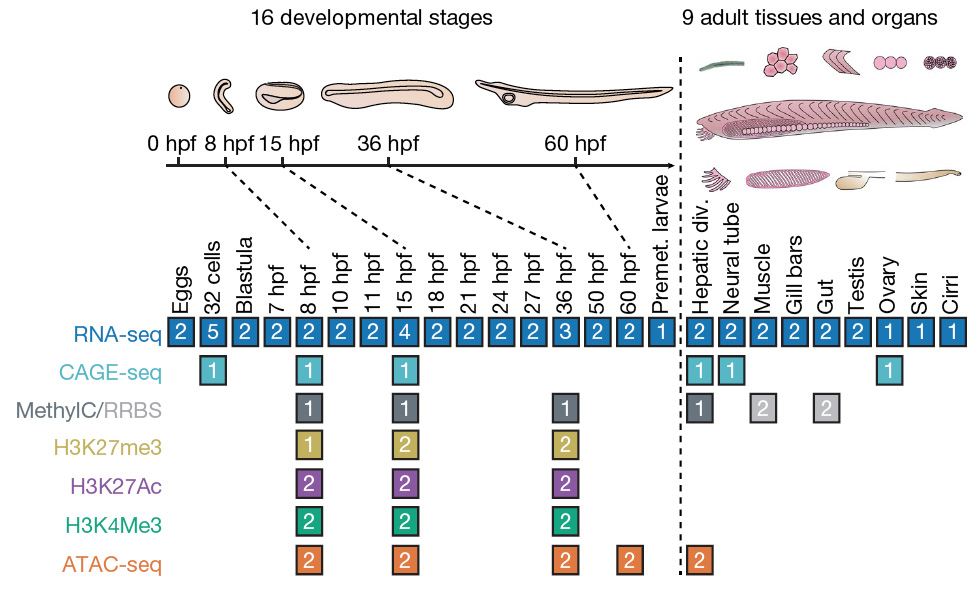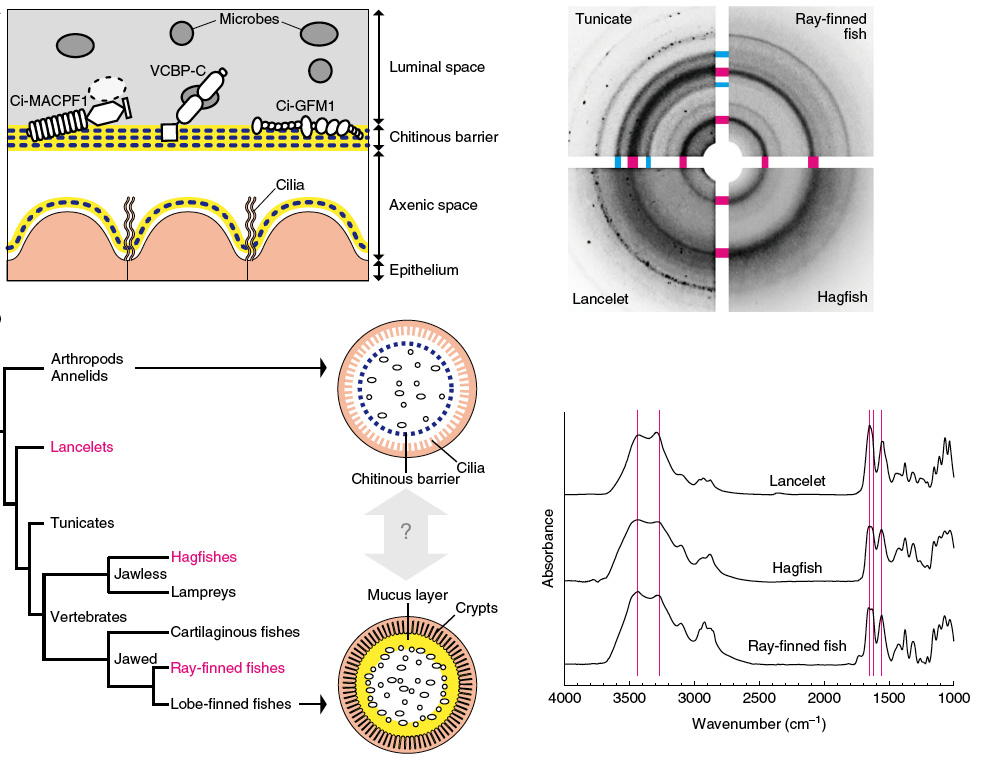研究人員
游智凱 博士
學經歷

Associate Research Fellow, Institute of Cellular and Organismic Biology, Academia Sinica, Taiwan
2016 - now
Assistant Research Fellow, Institute of Cellular and Organismic Biology, Academia Sinica, Taiwan
2007-2016
Postdoctoral Scholar, Division of Biology, California Institute of Technology, USA
2005 - 2007
Postdoctoral research fellow, Marine Biology Research Division, Scripps Institution of Oceanography, University of California, San Diego, USA
2005
Ph.D., Marine Biology Research Division, Scripps Institution of Oceanography, University of California, San Diego, USA
2005研究重點
My research is focused on the developmental mechanisms of the cephalochordate amphioxus. Amphioxus is a basal chordate and occupies a key position for understanding the possible characters in the proximate invertebrate ancestor of the vertebrates. In recent years, studies of amphioxus have been yielding fascinating insights into the anatomical and genetic changes involved in the evolutionary transition from invertebrates to vertebrates. My goals in studying the developmental genetics of amphioxus are as follows: 1) to elucidate the basic patterning mechanisms for the chordate body plan, and 2) to understand the evolutionary origin of the developmental mechanisms that lead to the emergence of vertebrate body plan.
Three specific research directions have been developed in the lab:
(1)The evolution of vertebrate peripheral nervous system: investigating the origin of vertebrate neural crest and placodes using amphioxus system
(2)Development of a continuous laboratory culturing system and research resources for amphioxus in Taiwan
(3)Germ cell formation and the molecular composition of germ plasm in cephalochordates
近期發表
Recent Publications
Co-option of the PRDM14-CBFA2T complex from motor neurons to pluripotent cells during vertebrate evolution
Masanori Kawaguchi, Kota Sugiyama, Kazumi Matsubara, Che-Yi Lin, Shigehiro Kuraku, Shota Hashimoto, Yoshiaki Suwa, Luok Wen Yong, Koji Takino, Shota Higashida, Daisuke Kawamura, Jr-Kai Yu, Yoshiyuki Seki
Development (2019) 146: de63
Gene regulatory networks underlying cellular pluripotency are controlled by a core circuitry of transcription factors in mammals, including POU5F1. However, the evolutionary origin and transformation of pluripotency-related transcriptional networks have not been elucidated in deuterostomes. PR domain-containing protein 14 (PRDM14) is specifically expressed in pluripotent cells and germ cells, and is required for establishing embryonic stem cells (ESCs) and primordial germ cells in mice. Here, we compared the functions and expression patterns of PRDM14 orthologues within deuterostomes. Amphioxus PRDM14 and zebrafish PRDM14, but not sea urchin PRDM14, compensated for mouse PRDM14 function in maintaining mouse ESC pluripotency. Interestingly, sea urchin PRDM14 together with sea urchin CBFA2T, an essential partner of PRDM14 in mouse ESCs, complemented the self-renewal defect in mouse Prdm14 KO ESCs. Contrary to the Prdm14 expression pattern in mouse embryos, Prdm14 was expressed in motor neurons of amphioxus embryos, as observed in zebrafish embryos. Thus, Prdm14 expression in motor neurons was conserved in non-tetrapod deuterostomes and the co-option of the PRDM14-CBFA2T complex from motor neurons into pluripotent cells may have maintained the transcriptional network for pluripotency during vertebrate evolution.


Link to the complete publication
Amphioxus functional genomics and the origins of vertebrate gene regulation
Marletaz, F., Firbas, P.N., Maeso, I., Tena, J.J., Bogdanovic, O., Perry, M., Wyatt, C.D.R., de la Calle-Mustienes, E., Bertrand, S., Burguera, D., Acemel, R.D., van Heeringen, S.J., Naranjo, S., Herrera-Ubeda, C., Skvortsova, K., Jimenez-Gancedo, S., Aldea, D., Marquez, Y., Buono, L., Kozmikova, I., Permanyer, J., Louis, A., Albuixech-Crespo, B., Le Petillon, Y., Leon, A., Subirana, L., Balwierz, P.J., Duckett, P.E., Farahani, E., Aury, J.M., Mangenot, S., Wincker, P., Albalat, R., Benito-Gutierrez, E., Canestro, C., Castro, F., D'Aniello, S., Ferrier, D.E.K., Huang, S., Laudet, V., Marais, G.A.B., Pontarotti, P., Schubert, M., Seitz, H., Somorjai, I., Takahashi, T., Mirabeau, O., Xu, A., Yu, J.K., Carninci, P., Martinez-Morales, J.R., Crollius, H.R., Kozmik, Z., Weirauch, M.T., Garcia-Fernandez, J., Lister, R., Lenhard, B., Holland, P.W.H., Escriva, H., Gomez-Skarmeta, J.L. and Irimia, M.
Nature (2018) 564: 64-70
Vertebrates have greatly elaborated the basic chordate body plan and evolved highly distinctive genomes that have been sculpted by two whole-genome duplications. Here we sequence the genome of the Mediterranean amphioxus (Branchiostoma lanceolatum) and characterize DNA methylation, chromatin accessibility, histone modifications and transcriptomes across multiple developmental stages and adult tissues to investigate the evolution of the regulation of the chordate genome. Comparisons with vertebrates identify an intermediate stage in the evolution of differentially methylated enhancers, and a high conservation of gene expression and its cis-regulatory logic between amphioxus and vertebrates that occurs maximally at an earlier mid-embryonic phylotypic period. We analyse regulatory evolution after whole-genome duplications, and find that—in vertebrates—over 80% of broadly expressed gene families with multiple paralogues derived from whole-genome duplications have members that restricted their ancestral expression, and underwent specialization rather than subfunctionalization. Counter-intuitively, paralogues that restricted their expression increased the complexity of their regulatory landscapes. These data pave the way for a better understanding of the regulatory principles that underlie key vertebrate innovations.

Link to the complete publication
Chitin-based barrier immunity and its loss predated mucus-colonization by indigenous gut microbiota
Keisuke Nakashima, Satoshi Kimura, Yu Ogawa, Soichi Watanabe, Satoshi Soma, Toyoji Kaneko, Lixy Yamada, Hitoshi Sawada, Che-Huang Tung, Tsai-Ming Lu, Jr-Kai Yu, Alejandro Villar-Briones, Sakura Kikuchi & Noriyuki Satoh
Nature Communications (2018) 9: 3402
Mammalian gut microbiota are integral to host health. However, how this association began remains unclear. We show that in basal chordates the gut space is radially compartmentalized into a luminal part where food microbes pass and an almost axenic peripheral part, defined by membranous delamination of the gut epithelium. While this membrane, framed with chitin nanofibers, structurally resembles invertebrate peritrophic membranes, proteome supports its affinity to mammalian mucus layers, where gut microbiota colonize. In ray-finned fish, intestines harbor indigenous microbes, but chitinous membranes segregate these luminal microbes from the surrounding mucus layer. These data suggest that chitin-based barrier immunity is an ancient system, the loss of which, at least in mammals, provided mucus layers as a novel niche for microbial colonization. These findings provide a missing link for intestinal immune systems in animals, revealing disparate mucosal environment in model organisms and highlighting the loss of a proven system as innovation.

Link to the complete publication
著作目錄
1. Kawaguchi M, Sugiyama K, Matsubara K, Lin CY, Kuraku S, Hashimoto S, Suwa Y, Yong LW, Takino K, Higashida S, Kawamura D, Yu JK, Seki Y*: Co-option of the PRDM14–CBFA2T complex from motor neurons to pluripotent cells during vertebrate evolution. Development 2019, 146: dev168633.
2. Yong LW, Kozmikova I, Yu JK*: Using amphioxus as a basal chordate model to study BMP signaling pathway. Methods Mol Biol 2019, 1891:91-114.
3. Marlétaz F, Firbas PN, Maeso I*, Tena JJ, Bogdanovic O, Perry M, Wyatt CDR, de la Calle-Mustienes E, Bertrand S, Burguera D, Acemel RD, van Heeringen SJ, Naranjo S, Herrera-Ubeda C, Skvortsova K, Jimenez-Gancedo S, Aldea D, Marquez Y, Buono L, Kozmikova I, Permanyer J, Louis A, Albuixech-Crespo B, Le Petillon Y, Leon A, Subirana L, Balwierz PJ, Duckett PE, Farahani E, Aury J-M, Mangenot S, Wincker P, Albalat R, Benito-Gutiérrez È, Cañestro C, Castro F, D’Aniello S, Ferrier DEK, Huang S, Laudet V, Marais GAB, Pontarotti P, Schubert M, Seitz H, Somorjai I, Takahashi T, Mirabeau O, Xu A, Yu JK, Carninci P, Martinez-Morales JR, Crollius HR, Kozmik Z, Weirauch MT, Garcia-Fernàndez J, Lister R, Lenhard B, Holland PWH, Escriva H*, Gómez-Skarmeta JL*, Irimia M*: Amphioxus functional genomics and the origins of vertebrate gene regulation. Nature 2018, 564:64-70.
4. Nakashima K*, Kimura S, Ogawa Y, Watanabe S, Soma S, Kaneko T, Yamada L, Sawada H, Tung CH, Lu TM, Yu JK, Villar-Briones A, Kikuchi S, Satoh N: Chitin-based barrier immunity and its loss predated mucus-colonization by indigenous gut microbiota. Nat Communications 2018, 9:3402.
5. Zieger E, Garbarino G, Robert NSM, Yu JK, Croce JC, Candiani S, Schubert M*: Retinoic acid signaling and neurogenic niche regulation in the developing peripheral nervous system of the cephalochordate amphioxus. Cell Mol Life Sci 2018, 75:2407-2429.
Link to the complete list of publication
Contact 智凱